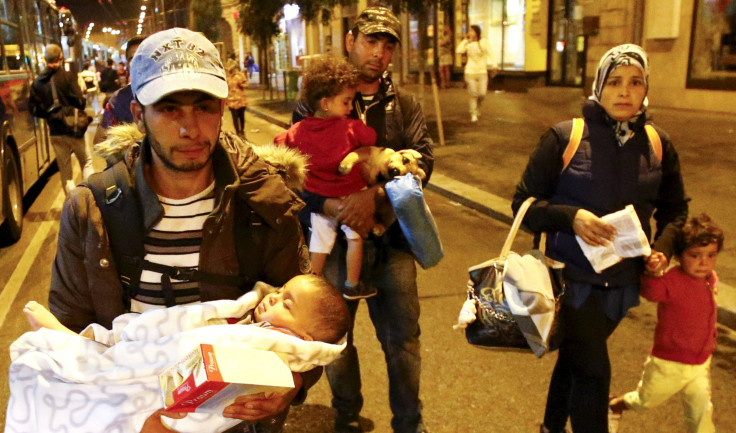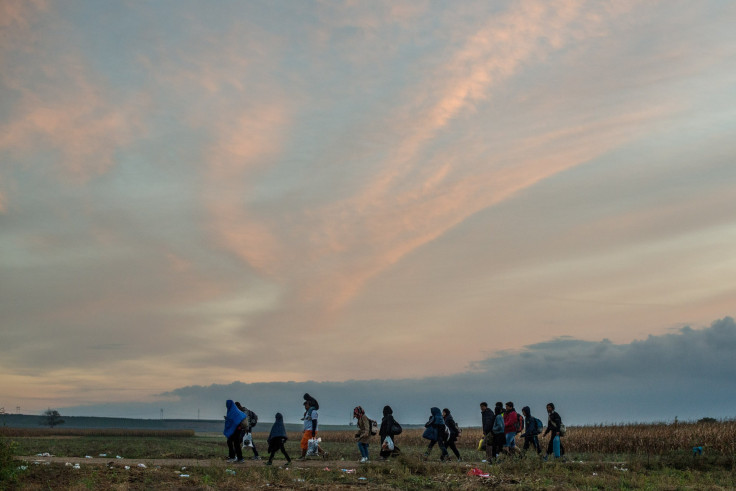Why Did Austrian Chancellor Resign? European Politicians Face Growing Challenges Amid EU Refugee Crisis

The resignation of Austrian Chancellor Werner Faymann this week appears to be the latest political casualty of the rise of a far-right movement amid an ever-divisive refugee crisis in Europe. From France to Germany to Poland, left-wing leaders face a growing challenge from anti-immigrant and Euroskeptic politicians, as an ongoing migration debate continues to grip the continent.
Faymann resigned Monday following his party’s poor performance in presidential elections in April, coupled with his lack of support among his left-wing Social Democratic (SPO) party. He also resigned from his role as party leader and is set to be replaced by Vienna Mayor Michael Häupl, who was nearly ousted from his own position in October following his outspoken support for welcoming refugees in the capital city. While tensions increase along the Austria-Italy border concerning a potential new wave of migration this summer, the Social Democrats, along with establishment parties throughout Europe, will likely face a series of difficult compromises in order to stay in power.
“People are insecure and so are politicians,” explained Andrea Götzelmann, the head of the voluntary migrant return program for the Austrian office of the International Organization for Migration. “Right now they look at the public opinion; people are calling for more right-wing or more restrictive actions, so [politicians] go for the restrictive actions.”
More than 1 million people sought asylum in Europe in 2015, with the vast majority of them looking to settle in Northern European countries such as Germany and Sweden. European authorities have increasingly struggled to cope with the influx in migration, as public housing grows strained and citizens who were once open to the idea of welcoming refugees begin to change their attitude.

After the arrival of more than 90,000 asylum-seekers to Austria in 2015, Faymann acquiesced to the demands of his coalition partners in the center-right Austrian People’s Party and decided to impose a strict cap on the number of refugees Austria would accept in the coming years. Politicians within Faymann’s party, and the group’s youth wing in particular, reacted with ire to this policy shift, accusing the chancellor of not defending the socially progressive roots of the party.
At the same time, Austria’s far-right, anti-immigrant Freedom Party of Austria (FPO) has seen a spike in support. While the party has existed since 1956, it had never performed particularly well in a presidential election in all of its 60 years. That all changed when the party’s candidate, Norbert Hofer, won the first round of elections in April, securing 36 percent of the vote and beating out candidates from the top two parties who did not score enough support to even make it to the second round.
Austria isn’t the only country to have seen a surge in support for anti-immigrant and Euroskeptic parties in the past year, as fears concerning parallel migration and terrorism crises have grown. Marine Le Pen’s National Front party in France swept seven out of 13 regions in first-round regional elections in December, only to be blocked from power through last-minute maneuvering on the part of the two establishment parties.
Poland and Hungary, among other Eastern European nations, have also seen a surge in support for such parties, with Poland’s Euroskeptic Law and Justice party winning parliamentary elections in October and Hungary’s anti-EU Jobbik party sweeping to victory in a key seat in a by-election in April. Anti-immigration sentiment has been high in both nations despite their low rates of immigration in recent years and their refusal of European Commission quotas on welcoming refugees.
“Anxiety about immigration is not necessarily correlated to the volume of immigration,” said Natalia Banulescu-Bogdan, the assistant director of the international program at the Washington, D.C.-based think tank the Migration Policy Institute. “It’s not the numbers themselves; it’s the specter of illegality and chaos.”

As is often the case concerning immigrant fears, the rise of the immigrant boogeyman belies deeper insecurities in the region, including dissatisfaction with the ruling elite and economic uncertainties. While Austria emerged relatively unscathed from a 2008 continentwide economic crisis that sank the euro and sent national deficits soaring, concerns linger about the country’s economic future.
“The whole situation now is actually reflecting on many other structural crises within the country,” said Gustav Gressel, an Austrian-born senior policy expert for the European Council on Foreign Relations, a think tank with bureaus throughout Europe. Regional and ideological divisions in the Social Democratic Party have created a lack of political unity, causing a greater number of people to turn to the Freedom Party of Austria, Gressel said.
“[The Social Democratic Party] is suffering from internal policy divisions, and the country is suffering from stalemate,” he said.

The country will need to form a cohesive refugee policy ahead of the summer, when migration experts have predicted northern Italy and its border with Austria will become a flash point for the migration crisis. With once-popular routes into Europe through Greece and the Balkan States effectively closed, asylum-seekers and economic migrants have increasingly looked to the longer and more dangerous route through the Mediterranean from North Africa.
Austria has already begun construction of a border fence with Italy in anticipation of the surge in arrivals, and riots broke out over the weekend between activists and police over the closed-door policy. As past migration patterns have shown, however, closed borders do not usually deter asylum-seekers and only force them to seek more perilous routes.
“When one entry point closes, another one opens," said Banulescu-Bogdan of the Migration Policy Institute, adding, “We haven’t done much to address the underlying drivers of these movements.”
© Copyright IBTimes 2024. All rights reserved.












